Thank you, Christian, for your valuable contribution!
03.08.2025 12:39 — 👍 0 🔁 0 💬 0 📌 0Riccardo Bocchi
@bocchiric.bsky.social
Developmental neurobiologist, interested in astrocytes. Based @neurogeneva http://bocchilab.ch
@bocchiric.bsky.social
Developmental neurobiologist, interested in astrocytes. Based @neurogeneva http://bocchilab.ch
Thank you, Christian, for your valuable contribution!
03.08.2025 12:39 — 👍 0 🔁 0 💬 0 📌 0Huge shoutout to first author @alanzhoujf.bsky.social 🙌 and all our fantastic collaborators — couldn’t have done it without such an amazing team work! 💥🧠 Thanks to the funding support from
@snsf.ch #Ambizione
6/ 🧭 Want to explore the data yourself? Check out our interactive site where you can browse gene expression, subtype markers, lineage relationships, and spatial maps: 🌐 bocchilab.ch/Zhou_et_al_2...
31.07.2025 07:17 — 👍 0 🔁 0 💬 1 📌 05/ ⭐️ This study reshapes our understanding of how astrocyte diversity emerges during cortical development.
31.07.2025 07:17 — 👍 0 🔁 0 💬 1 📌 04/ Why does this matter?
Because astrocyte origin shapes astrocyte function.
Olig2-lineage astrocytes are synaptogenic — they promote synapse formation.
Knock out Olig2, and synaptic density drops.
3/ Lineage 1 🟦: Emx1⁺ radial glia → neurons first, astrocytes later.
Lineage 2 🟥: Emx1⁻ radial glia → few neurons, mostly astrocytes.
Each lineage gives rise to different astrocyte subtypes — with unique locations and functions.
2/ Here is the twist 🧬.
Using high-throughput clonal tracing (TrackerSeq), we discovered that these subtypes originate from two molecularly distinct radial glia lineages.
1/ Not all astrocytes are created equal.
We mapped the molecular and spatial landscape of astrocytes in the mouse neocortex — and found five distinct subtypes, organized across cortical layers and white matter.
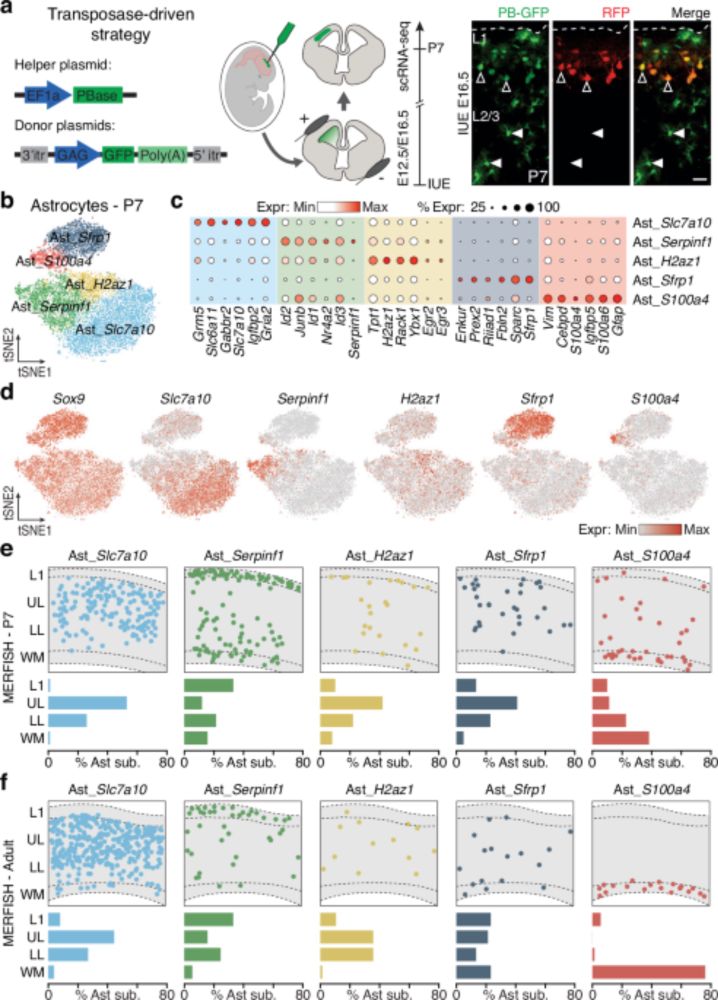
🚨 First paper from the Bocchi lab out now in @natcomms.nature.com!
We show that astrocytes in the cortex arise from not one, but two distinct progenitor lineages, each giving rise to specialized subtypes with distinct roles.
Here the story📖 doi.org/10.1038/s414...
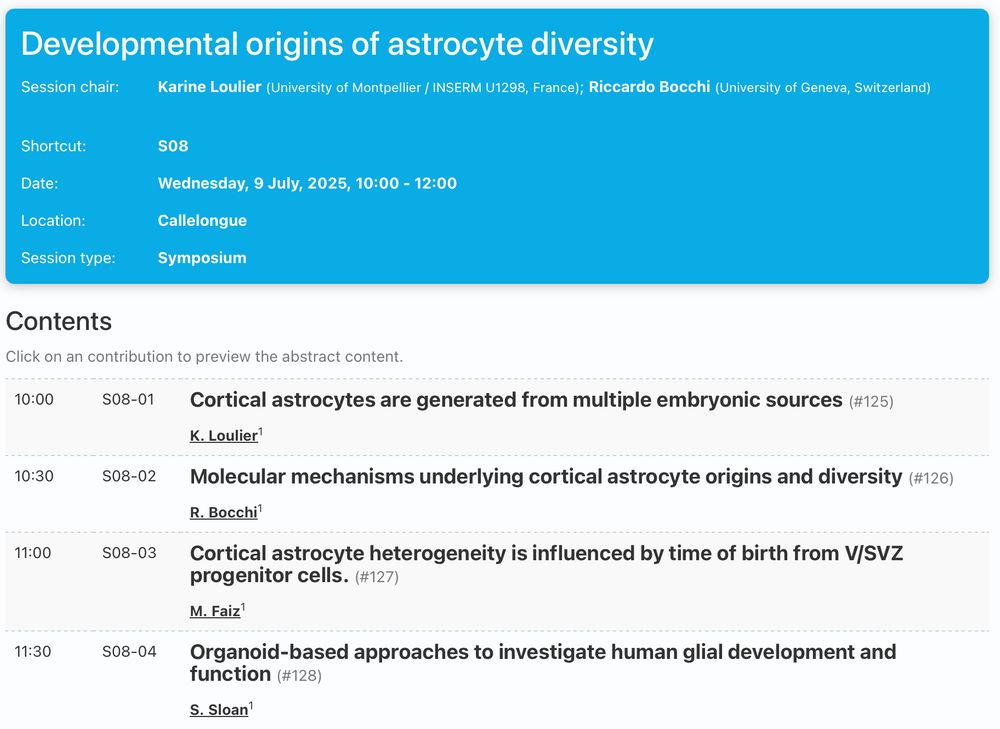
Thrilled to co-chair Symposium S08: Developmental Origins of Astrocyte Diversity tomorrow at #GLIA2025! Join us for cutting-edge insights into how astrocytes are born , diversify, and shape brain function. Wed, July 9 | 🕙 10:00–12:00 With @loulierk.bsky.social , Maryam Faiz & @sloanlab.bsky.social
08.07.2025 21:24 — 👍 6 🔁 2 💬 0 📌 0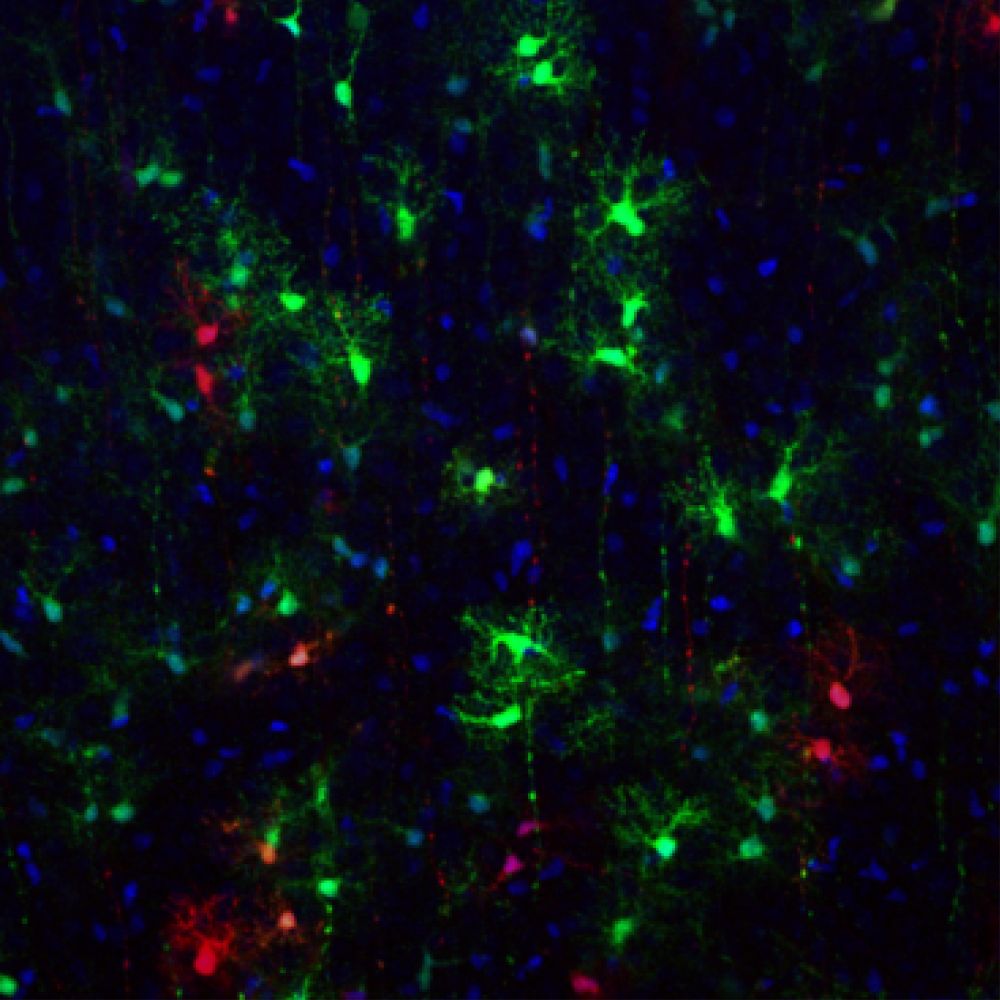
✨ Astrocyte diversity starts at the source!
🧬 We uncover how dual radial glia lineages generate distinct astrocyte subtypes in the neocortex — revealed by MERFISH, scRNA-seq & clonal tracing.
📍#GLIA2025 | Poster T10-010A
🧠 w/
@alanzhoujf.bsky.social
in Marseille
Come talk glia with us!
Thank you!!!
28.02.2025 21:12 — 👍 0 🔁 0 💬 0 📌 0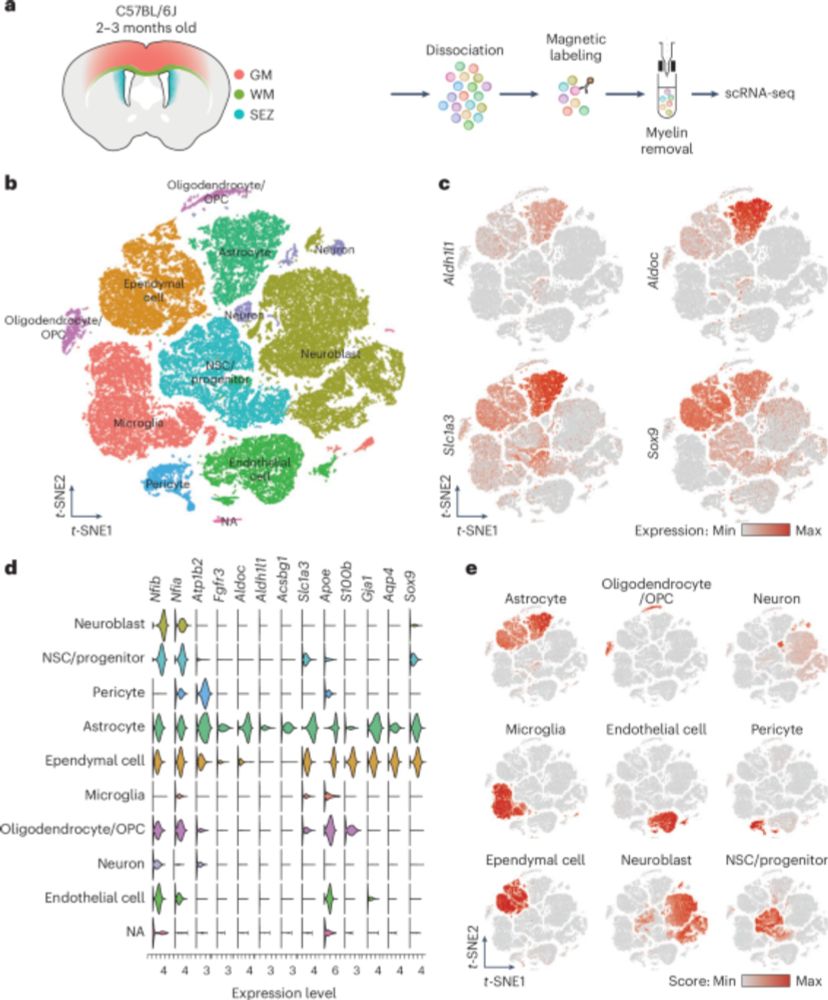
White matter (WM) #astrocytes differ significantly from grey matter (GM) astrocytes, with WM
astrocytes in the forebrain exhibiting unique proliferation capacity 🧪🧠
www.nature.com/articles/s41...
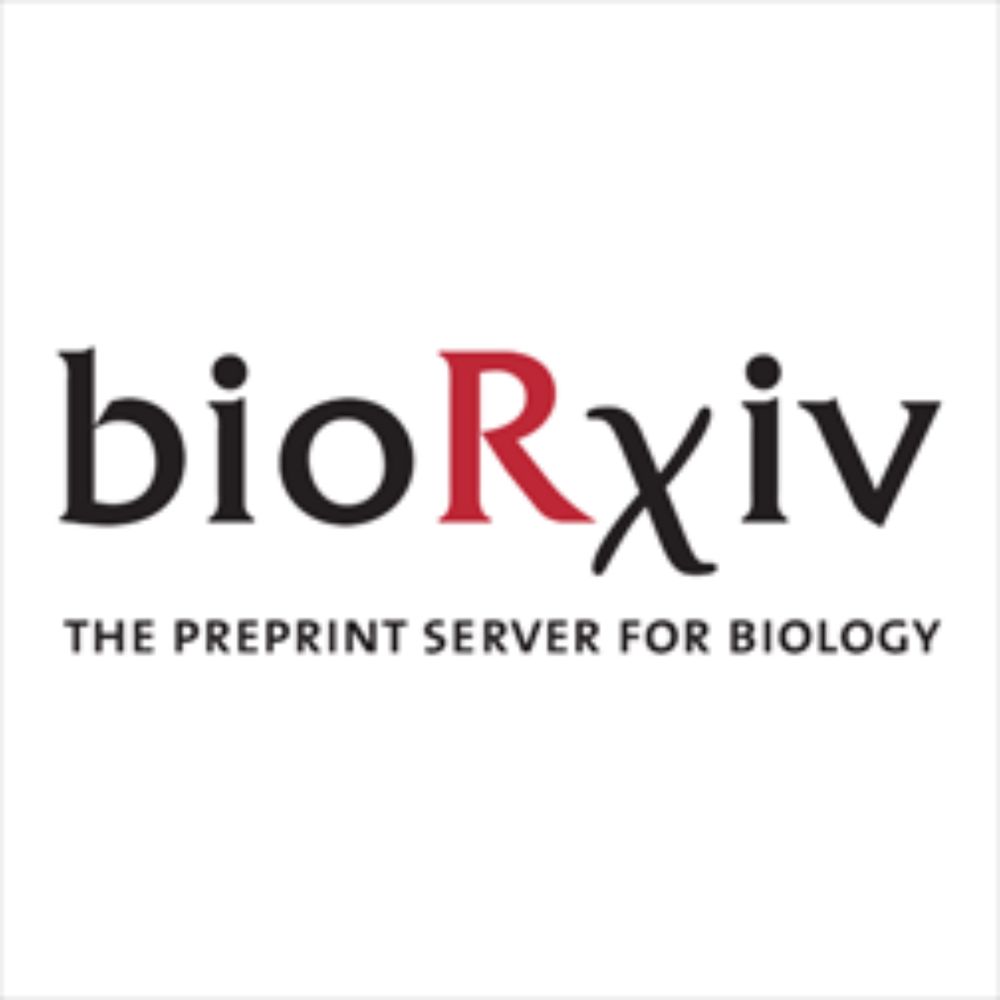
🌌 The journey into astrocyte diversity doesn’t stop here! Stay tuned for new insights into how their molecular and functional diversity originates during brain development. 🚀 A new story is coming soon—check out our bioRxiv preprint here: www.biorxiv.org/content/10.1...
24.02.2025 16:06 — 👍 5 🔁 1 💬 0 📌 0📊 Explore the single-cell RNA-seq data yourself: bocchilab.ch/Bocchi_et_al...
24.02.2025 16:06 — 👍 3 🔁 0 💬 1 📌 0💡 Why does this matter? This breakthrough unlocks new possibilities for 🛠️ brain repair, especially in conditions involving WM damage or degeneration. Understanding how these astrocytes support axons and drive myelination is key to tackling diseases like multiple sclerosis.
24.02.2025 16:06 — 👍 1 🔁 0 💬 1 📌 0🔍 In the corpus callosum, WM astrocytes show a unique ability to proliferate—a feature completely absent in the cerebellar WM. This discovery highlights their region-specific roles in generating new astrocytes.
24.02.2025 16:06 — 👍 1 🔁 0 💬 2 📌 0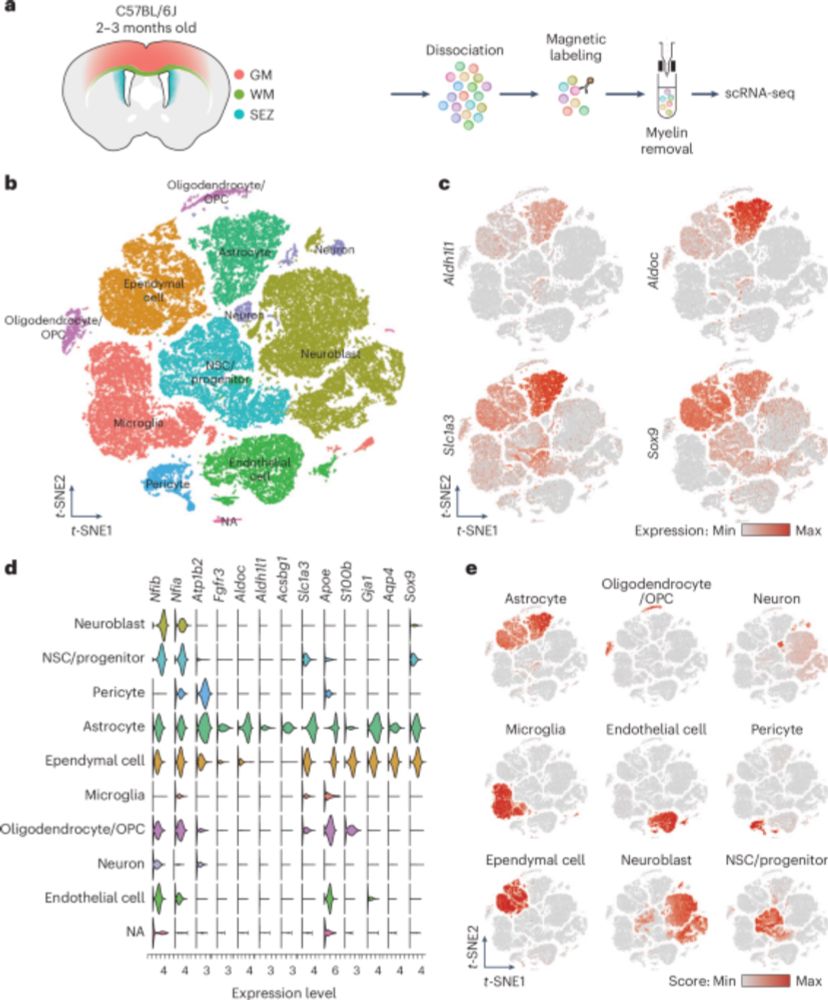
🚀 Think all white matter (WM) astrocytes are the same? Think again! 🌟 Our latest research reveals striking regional differences that challenge existing views on astrocyte diversity and function. 🧠
www.nature.com/articles/s41...